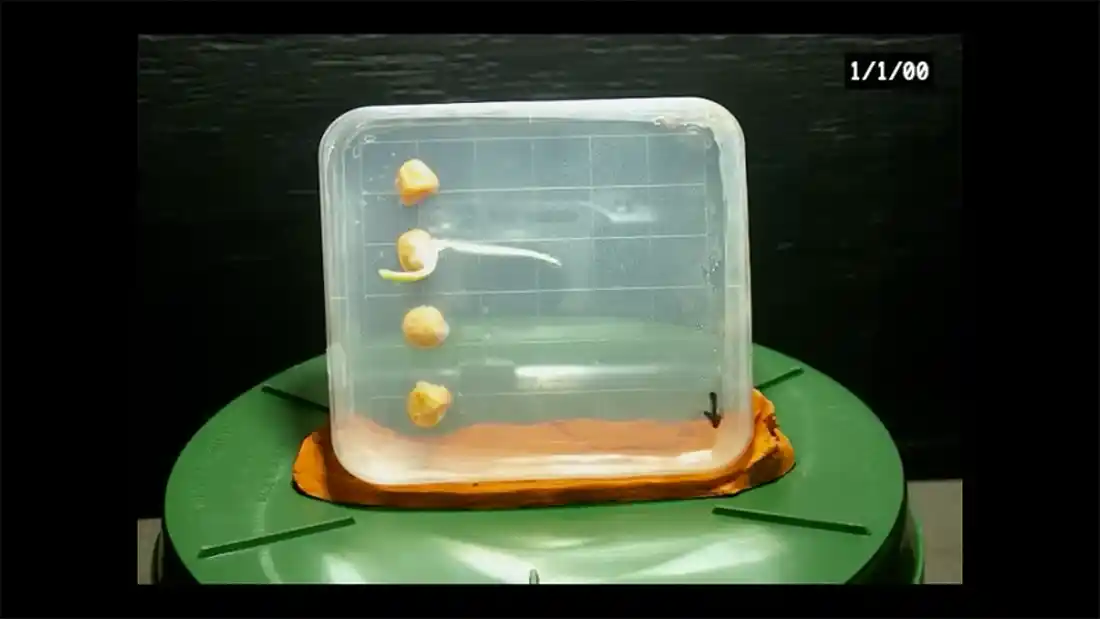

Gravitropism, gravity, positive, negative, phototropism, hydrotropism, water, roots, seeds, plants.
We all know that when we grow plants we tend to see them rising up through the ground, and we know that the roots move underground to find water and nutrients that the plants need to grow.
But how do they know how to do that, and what makes them grow that way?
If we plant a seed in the ground, we know that at some point, you will get a plant poke through the soil. Does it matter which way the seed gets planted? Well, in some cases, yes (like a bulb, you should really place them bulbous end down), but with seeds, it doesn't matter too much, as they will figure it out themselves. But how?
Tropisms. A plant has an ingenious way to figure out which way to grow, even if the seed has just been dropped (perhaps by one of the resident birds in your garden). A tropism is a movement of a biological organism, towards an end point, or continuous point from one side to another. We know the Sun rotates around the Earth, and this in turn moves across our gardens from one side to the other (if like me, you have an Easterly facing garden, the Sun rises in the garden, and moves around the side of the fence, to the front of the house, and then disappears again until morning). Let's take a look at the three types of tropism in question here.

There are a total of five tropisms that affect plants - gravitropism, phototropism, thigmotropism, hydrotropism and thermotropism. They each have positive and negative feedback in response to each of these.
Also known as geotropism, gravitropism is a phenomenon using gravity, and plants have a special cell in them that detects the position of gravity in relativity to itself. So, where it is, and which way up it is facing. This is situated in the root caps, and allows for roots to extend and grow further into the ground. It literally uses gravity to grow downwards and find food and water in the soil.
The following still is from a video on genetic modification, with the following details:
Please click on the image to view the video.

Plants use gravitropism to form the roots, which in itself is the act of using negative phototropism. You can literally see the roots forming downwards from a seed and away from the light.
Another tropism is phototropism, which is similar to gravitropism, is phototropism. This is when a plant reacts to a light source. We know they react to sunlight, but in fact, they also react to a strong light. If you were to place a plant into a dark room, it would effectively stop growing. As soon as you place some form of light source, the plant will start to grow.
The following still is from a video on genetic modification, with the following details:
Please click on the image to view the video.

Watching that video shows positive phototropism, and this is apparent as the plant moves towards the light source. When the light is moved from one side to the other, the plant reacts. It moves with the light source. This is positive phototropism.
OK, so I've talked about positive phototropism, and a litte about gravitropism. Here's where it can sound a little tricky. Plants also use negative phototropism - this is where they grow away from the light. Some plants do this instead of growing toward the light, but mainly you would see this happen in roots, along with using gravitropism.
We've had the use of gravity making plants grow parts in the right directions, and phototropism where the plant reacts to a light source. What about water?
Plants do indeed react to a water source. If you're a keen gardener like me, you will know that plants need water to survive. At the time of writing this, we are having a major heatwave in the UK where temperatures will be reaching almost or just over 40° Celcius - even I want to drink more liquid, so a plant will want the same. We can help plants with a permanent water source nearby. But what will the plant do?
Let's have an example. There's an image in the resources to have a look at. In the image, there are two plants in the ground. One is a plant with a root system where there is no water source, so the roots are growing equally outward. The other plant has a water source nearby, and the root system has actively grown toward the water source (a terracotta pot is always a good way to water plants this way, as they are porous). This is called hydrotropism.
When you take a cutting from a plant, you can make it grow by using water. Placing the cutting into water will make the root system grow, and if you have a clear container, you will then see roots forming on that cutting, and it will be a new plant. This is because of both hydrotropism and gravitropism.
Disclaimer | About Me | Sitemap
Website design by SyntaxHTML.



Blue icons adapted from icons courtesy of Smashicons.com